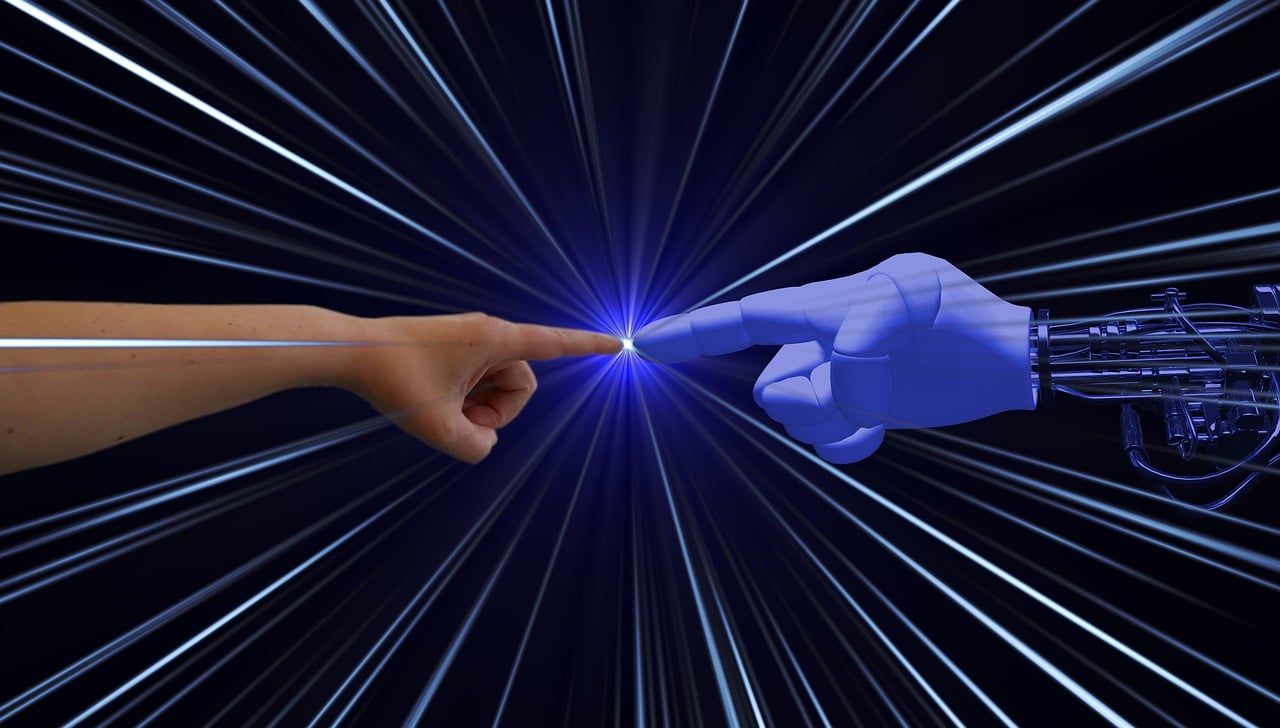In today’s fast-paced business landscape, the automation of trademark and patent applications has emerged as a game-changer. As technology continues to evolve, the legal field is not immune to its transformative power. Trademarks and patents, which play a pivotal role in safeguarding intellectual property, have traditionally been associated with cumbersome paperwork and time-consuming processes. However, the advent of automation has ushered in a new era of efficiency and accuracy in handling these vital legal matters.

The Evolution of Trademark and Patent Applications
Traditionally, the process of filing trademark and patent applications was akin to embarking on a quest through a bureaucratic labyrinth. It was a world of manual labor, where inventors and entrepreneurs navigated a convoluted path paved with endless paperwork and physical submissions. This archaic method was not for the faint of heart; it demanded a formidable tolerance for paperwork and bureaucracy. The cumbersome nature of the process often resulted in lengthy delays and the ever-present risk of critical errors. It was a painstaking journey that could test the patience and perseverance of even the most diligent innovators.
The physicality of this process was palpable. Inventors had to compile stacks of documents, fill out intricate forms, and make copies upon copies of their applications. The process was not only time-consuming but also resource-draining. The need to mail or hand-deliver applications to patent offices added additional layers of complexity and expense.
However, with the advent of automation, this narrative underwent a profound transformation. Automated systems arrived as the heralds of a new era in trademark and patent applications. They swept away the mountains of paperwork and bureaucracy, replacing them with sleek, digital interfaces and intuitive online platforms. The once-daunting journey became more accessible, efficient, and user-friendly. The notion of physically queuing up at patent offices with bundles of documents began to fade into obscurity.
In this automated age, inventors and entrepreneurs found themselves liberated from the shackles of manual labor. They could now navigate the application process with ease, relying on technology to simplify what was once an arduous endeavor. The era of drowning in piles of paperwork gradually became a relic of the past, replaced by a streamlined and efficient process that empowers innovators to protect their intellectual property swiftly and with greater confidence.
The Benefits of Automation
Automation has brought a plethora of benefits to the table for both applicants and the legal professionals involved in trademark and patent applications. Let’s delve into these advantages in detail:
1. Speed and Efficiency
The acceleration of trademark and patent application processing through automation is nothing short of revolutionary. In the pre-automated era, the journey from submitting an application to its approval often resembled a marathon. Months, if not years, would elapse before innovators could secure their intellectual property rights. However, automation has radically transformed this landscape.
Automated systems possess the remarkable capability to handle a vast number of applications concurrently, and this supercharged efficiency translates into significantly reduced processing times. Trademark and patent applications that once languished in bureaucratic queues can now zoom through the system with remarkable speed. This newfound expediency not only saves time but also empowers inventors and entrepreneurs to assert their intellectual property rights swiftly, fostering innovation by leaps and bounds.
Moreover, the swiftness afforded by automation is not just a matter of convenience; it’s a strategic advantage. In today’s dynamic business environment, being first to secure a patent or trademark can make all the difference. Whether it’s protecting a groundbreaking invention or safeguarding a unique brand, the ability to secure legal protection rapidly can be a game-changer.
2. Accuracy and Error Reduction
In the realm of intellectual property law, precision is paramount. The consequences of even minor errors in trademark and patent applications can be severe, potentially leading to the rejection of an application or costly legal disputes. In the bygone era of manual data entry, the process was rife with the risk of human error.
Automation emerges as a formidable ally in the battle against inaccuracies. By eliminating the need for manual data input, automation dramatically reduces the likelihood of critical details being overlooked or misrepresented. Complex legal documents, which once relied on the meticulous efforts of individuals, can now be generated with machine-like precision.
This newfound accuracy doesn’t just save time and money; it also enhances the overall integrity of the intellectual property system. Innovators can have greater confidence that their applications are not marred by preventable errors, and patent offices can process applications with greater trust in their correctness. As the legal field embraces automation, the reliability and robustness of the trademark and patent application process take a giant leap forward.
3. Cost Savings
The financial burden associated with filing trademark and patent applications has long been a formidable barrier for many aspiring inventors and entrepreneurs. In the traditional, manual world of paperwork and postage, the costs could quickly add up, dissuading individuals and startups from seeking crucial intellectual property protection.
Automation emerges as a potent force for dismantling this financial barrier. By streamlining the application process and reducing the need for physical paperwork, it opens the door to significant cost savings. The administrative expenses and legal fees that once weighed heavily on applicants’ budgets can now be substantially reduced.
This cost-effectiveness is a game-changer, democratizing access to intellectual property protection. It ensures that innovative ideas, regardless of the financial resources behind them, have a fair chance to thrive and flourish. Furthermore, as automation continues to evolve, the potential for even more cost-efficient solutions in the realm of trademark and patent applications becomes increasingly promising, further leveling the playing field for inventors and entrepreneurs.

4. Accessibility
The democratization of trademark and patent application processes is an empowering consequence of automation. Traditionally, these processes were often shrouded in legal jargon and bureaucratic intricacies, making them daunting for individuals and small businesses without access to extensive legal resources. However, automation has shattered these barriers, rendering the process accessible to a broader spectrum of society.
User-friendly online platforms and intuitive interfaces have become the norm in the automated era. These digital tools have transformed what was once a labyrinthine journey into a straightforward and navigable path. Even individuals with limited legal expertise can now embark on the trademark and patent application process with relative ease. This newfound accessibility levels the playing field, allowing innovators from all walks of life to protect their intellectual property rights. It encourages a more diverse range of ideas and innovations to flourish, ultimately driving progress and fostering a culture of innovation that benefits society as a whole.
5. Enhanced Communication
Automation doesn’t merely optimize the application process; it also revolutionizes the way applicants interact with patent offices and legal professionals. Through automated systems, seamless communication becomes the norm. Updates, notifications, and correspondence can be transmitted electronically, ensuring that applicants are continually informed about the status of their applications.
This real-time communication fosters transparency and accountability within the application process. Gone are the days of anxiously awaiting snail mail or navigating complex phone trees. Instead, applicants can receive immediate updates on the progress of their applications, any requested actions, or potential issues. This not only reduces uncertainty and anxiety but also enables applicants to respond promptly to any inquiries or requests for additional information. The result is a more efficient and streamlined process that benefits both applicants and the agencies handling the applications.
6. Global Reach
In today’s interconnected world, intellectual property often transcends borders. Businesses and innovators frequently seek international protection for their trademarks and patents. However, navigating the complex web of international regulations and requirements has historically been a formidable challenge. Automation has emerged as a bridge to overcome these complexities and expand the global reach of intellectual property protection.
Automated systems are equipped to assist applicants in the intricacies of international trademark and patent filings. They can provide guidance on the specific requirements of each country or jurisdiction, helping applicants tailor their applications accordingly. This newfound ease of international filings opens up new opportunities for businesses and individuals seeking to protect their intellectual property on a global scale. It not only encourages innovation on an international level but also ensures that intellectual property is safeguarded across diverse markets, fostering a climate of fair competition and global collaboration.
The Role of Artificial Intelligence (AI)
Automation in trademark and patent applications owes much of its efficiency to the integration of artificial intelligence (AI) technologies. AI-powered algorithms can analyze vast databases of existing patents and trademarks, helping applicants identify potential conflicts or prior art. This proactive approach minimizes the chances of rejection and allows for informed decision-making in the application process.
Furthermore, AI can assist in drafting patent claims and trademark descriptions. By analyzing language patterns and legal precedents, AI can generate precise and comprehensive application documents, reducing the burden on legal professionals and ensuring that applications meet the necessary criteria.
Challenges and Considerations
As the world embraces automation in trademark and patent applications, it’s imperative to acknowledge the challenges and considerations that accompany this technological leap. One of the foremost concerns is the protection of sensitive intellectual property information. In an era where data breaches and cyber threats are ever-present, safeguarding this invaluable data is paramount. Automated systems must be fortified with robust security measures to prevent unauthorized access, hacking, or leaks of sensitive information. Encryption, secure authentication protocols, and stringent access controls are just some of the tools at the forefront of ensuring data privacy and security. These safeguards are essential to maintain the trust of applicants and legal professionals in automated systems.
Furthermore, while automation streamlines many aspects of the application process, it’s crucial not to entirely eliminate the human touch. Legal professionals continue to play an indispensable role in navigating the complex landscape of intellectual property laws. They possess the expertise to interpret intricate regulations, advise applicants on strategic decisions, and address legal disputes that may arise during the application process. While automation can handle the procedural aspects efficiently, the nuanced and dynamic nature of intellectual property requires the judgment and experience of human professionals. These legal experts are instrumental in guiding applicants through the maze of legal intricacies and ensuring that their intellectual property rights are fully protected.
Additionally, intellectual property is a domain where each case is unique, and automated systems may not always account for the subtleties and exceptions that arise. Legal professionals can provide tailored advice and solutions that are adapted to the specific needs and circumstances of each applicant. Their involvement ensures that trademark and patent applications are not treated as one-size-fits-all processes, but rather as individualized strategies aimed at securing and preserving the intellectual property rights of innovators and businesses. Thus, the harmonious integration of automation with human expertise is essential to strike the right balance in this evolving landscape.

Conclusion
The automation of trademark and patent applications represents a significant step forward in the world of intellectual property protection. It streamlines processes, reduces costs, enhances accuracy, and makes the entire application process more accessible. With the integration of AI technologies, automation is poised to continue evolving and revolutionizing the field.
As technology continues to advance, the legal profession must adapt and embrace these innovations to better serve the needs of inventors, entrepreneurs, and businesses worldwide. The automation of trademark and patent applications is a prime example of how technology can empower individuals and organizations to protect their creative and innovative endeavors efficiently and effectively.

